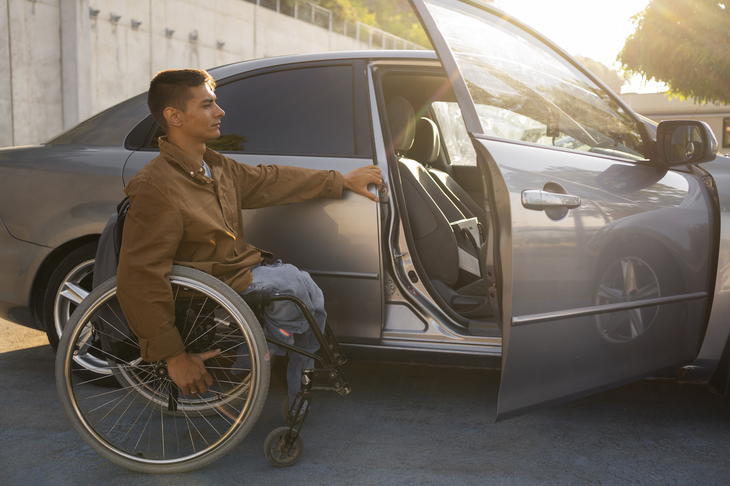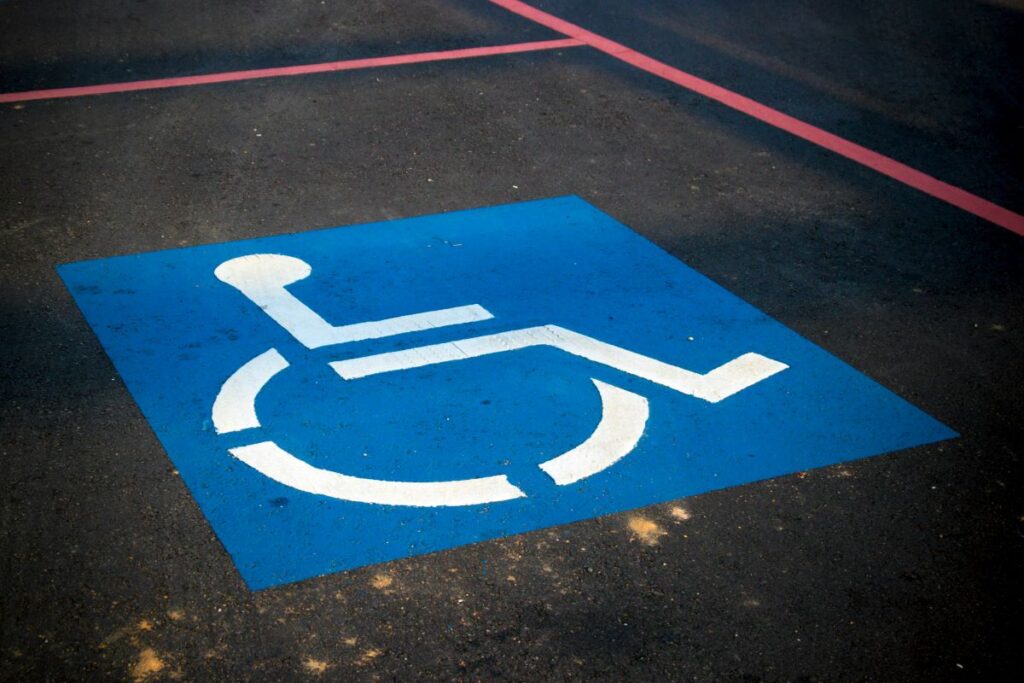Handling the process of getting a Connecticut DMV disabled placard can feel overwhelming, especially for those who may urgently need one due to mobility challenges. A disabled placard grants access to designated parking spaces, providing convenience and ease of access for individuals with qualifying disabilities.
Whether you’re applying for the first time or renewing an existing placard, it pays to know the necessary steps, documentation, and timelines. For many, the uncertainty around the application process and wait times can add to the stress of an already challenging situation. So, this article aims to provide a full overview of the process, including how long it takes to get a disabled placard in Connecticut.
Understanding Connecticut Handicap Parking Regulations
Before diving into the specifics of obtaining a Connecticut DMV disabled placard, it’s good to grasp the state’s handicap parking regulations.
Connecticut follows a set of rules to ensure that individuals with disabilities have access to convenient parking spaces. As well, these regulations define who qualifies for a disabled parking permit and outline the proper use of these placards.
1. Eligibility Criteria:
To qualify for a Connecticut disabled parking permit, you must have a condition that significantly impairs your mobility. This includes, but is not limited to, conditions like blindness, loss of limb, or an inability to walk without assistance.
2. Types of Placards:
Connecticut offers two types of disabled placards—temporary and permanent. While temporary placards are valid for up to six months, permanent ones require renewal every four to six years (they expire at the same time as your driver’s license or identification card).
3. Authorized Use:
The placard must only be used by the person it is issued to. Handicap placard misuse can result in fines and revocation of the permit.
The Connecticut Disabled Parking Permit Application Process
Applying for a Connecticut DMV handicap placard involves several steps, and understanding these can help streamline the process. Here’s a breakdown of what you need to do:
1. Complete the Application Form (Form B-225):
The first step is to fill out the Application for Special Permit for Persons with Disabilities form. This form requires basic information, including your name, address, and details about your disability.
2. Medical Certification:
A licensed physician, chiropractor, physician assistant, or advanced practice registered nurse must certify your condition. They will need to complete a portion of the form, detailing the nature of your disability.
3. Submit the Application:
You can submit the completed form in person or by mail to the Connecticut DMV. Along with the application, include any required fees, especially if you’re applying for a replacement or additional placard.
How Long Does It Take to Get a Connecticut DMV Disabled Placard?
This is one of the most frequently asked questions. The answer depends on several factors, including the submission method and current processing times at the DMV.
1. Processing Time for Mailed Applications:
If you mail your application, expect a longer processing time. On average, receiving your placard may take about 2 to 4 weeks. However, delays can occur, especially during peak seasons or if you send an incomplete application.
2. In-Person Applications:
For a faster turnaround, consider submitting your application in person at a local DMV office. While this doesn’t guarantee immediate issuance, it can expedite the review process. Normally, you can expect to receive your placard within 1 to 2 weeks.
3. Online Tracking:
Although Connecticut DMV does not currently offer an online tracking system for disabled placard applications, you can contact the DMV’s customer service for updates on your application’s status.

Factors Affecting Connecticut DMV Disabled Placard Processing Time
Various factors can affect how quickly you receive your Connecticut DMV disabled placard. Understanding these can help you better plan and manage your expectations.
1. Application Accuracy:
Incomplete or inaccurate applications can significantly delay the process. Double-check all information before submission, especially the medical certification.
2. High Volume Periods:
Certain times of the year, like the end of the fiscal quarter, may result in longer wait times due to increased application volumes.
3. Mail Delays:
If you choose to submit your application by mail, external factors like postal delays can affect the overall processing time.
What to Do While Waiting for Your Connecticut DMV Disabled Placard
While waiting for your Connecticut disabled parking permit, there are a few things you can do to make the transition smoother:
1. Temporary Parking Solutions:
If you have a temporary disability and need immediate parking accommodations, consult with local authorities about temporary permits or parking arrangements.
2. Check Application Status:
While there’s no online tracking, you can contact the DMV for updates on your application’s status. This can give you a better idea of when to expect your placard.
3. Understand Local Regulations:
Familiarize yourself with local parking regulations to avoid fines or towing. This is especially important if you’re using a temporary permit or accommodations.
Common Mistakes to Avoid
Applying for a Connecticut DMV disabled placard can be straightforward if you avoid common pitfalls. Here are some mistakes to steer clear of:
- Incomplete Application Forms: Double-check that you filled out all sections correctly, including the medical certification.
- Expired Medical Certification: Make sure the medical certification is recent. Some conditions require a certification dated within the last three months.
- Ignoring Renewal Notices: For permanent placards, renewal notices are sent before expiration. Ignoring these can result in fines and loss of privileges.
How Long It Takes to Get a Connecticut DMV Disabled Placard: Final Thoughts
Obtaining a Connecticut DMV disabled placard involves several steps, from understanding state regulations to applying. While the process may take a few weeks, being well-prepared can help ensure a smooth experience.
Whether you apply in person or by mail, following the guidelines and staying informed will help you get your placard as quickly as possible. Remember to double-check all information and consult with your healthcare provider to ensure the accuracy of your application.
Getting a Connecticut handicap placard might be different from the New Jersey handicap parking permit application, for instance. No matter the state you’re in, we can help make your process easier and safer.
Featured image by Pixabay





